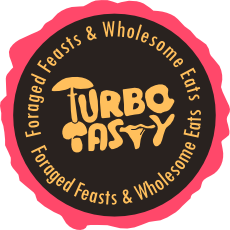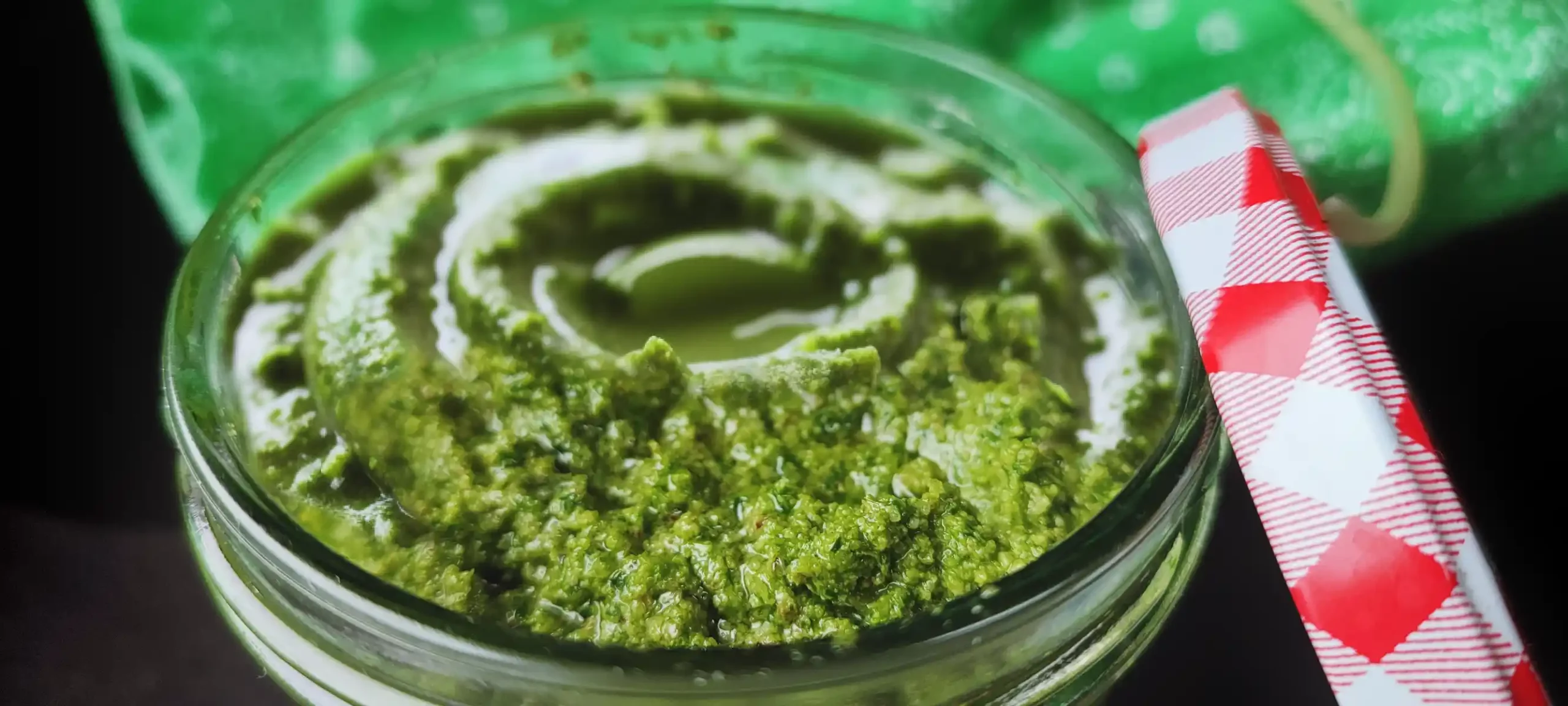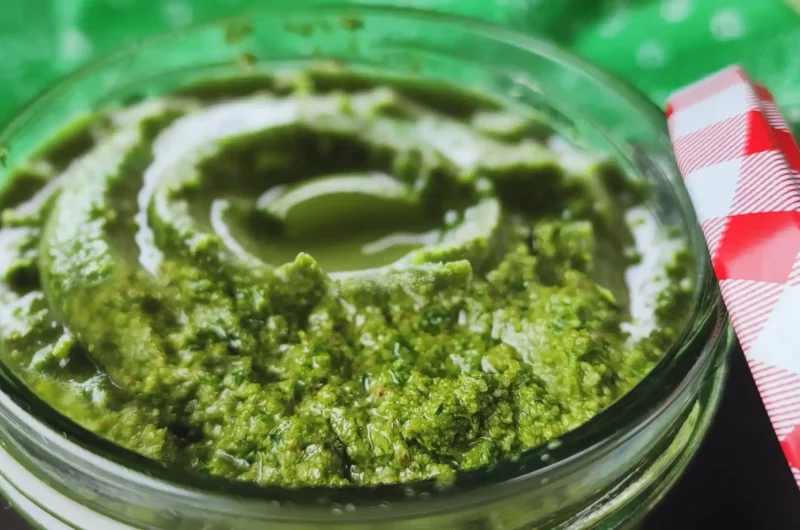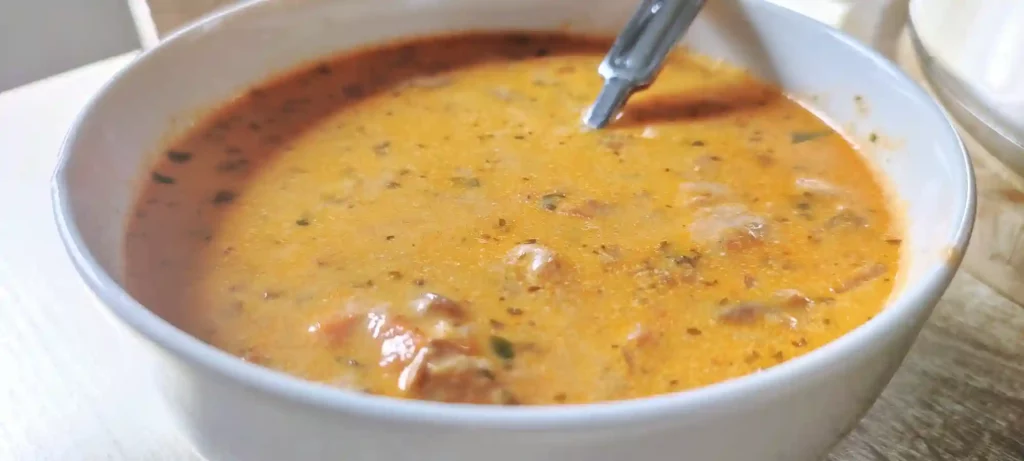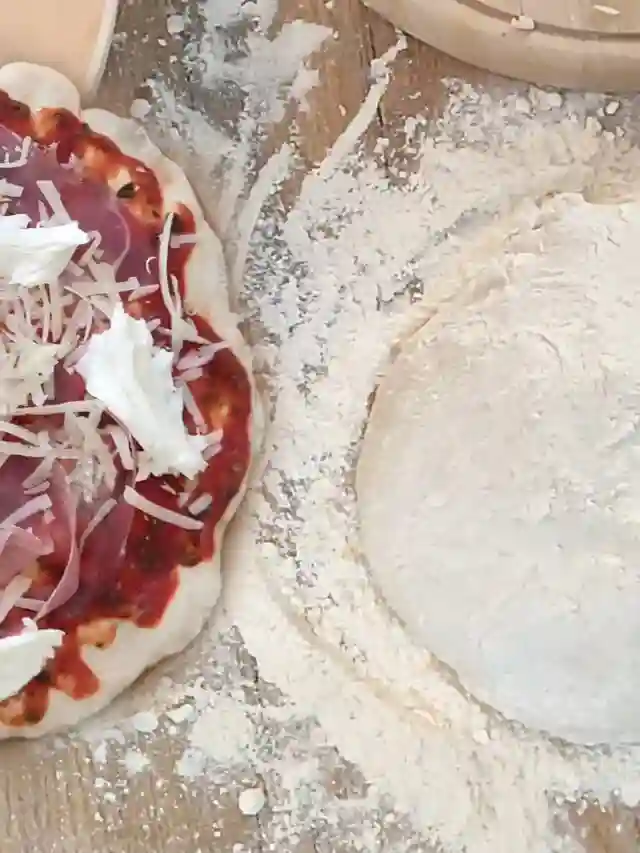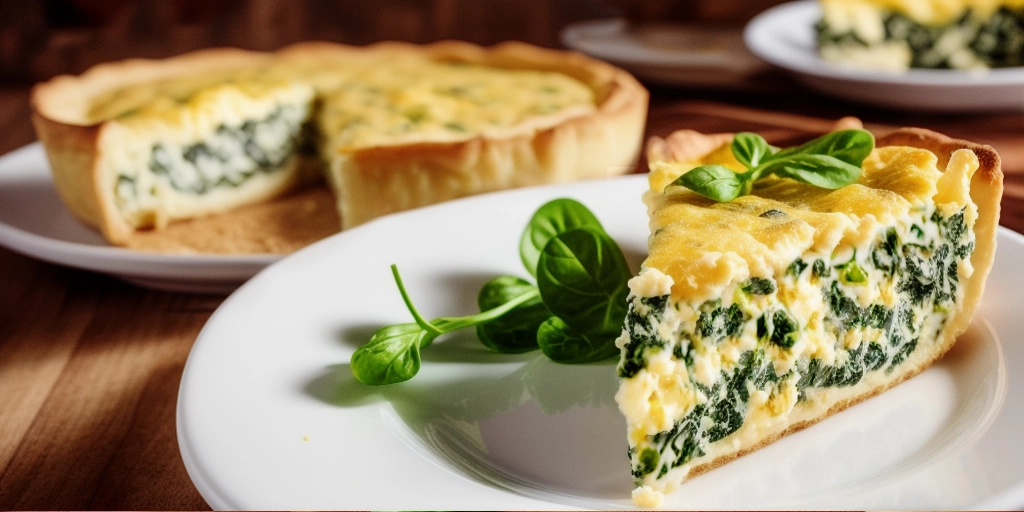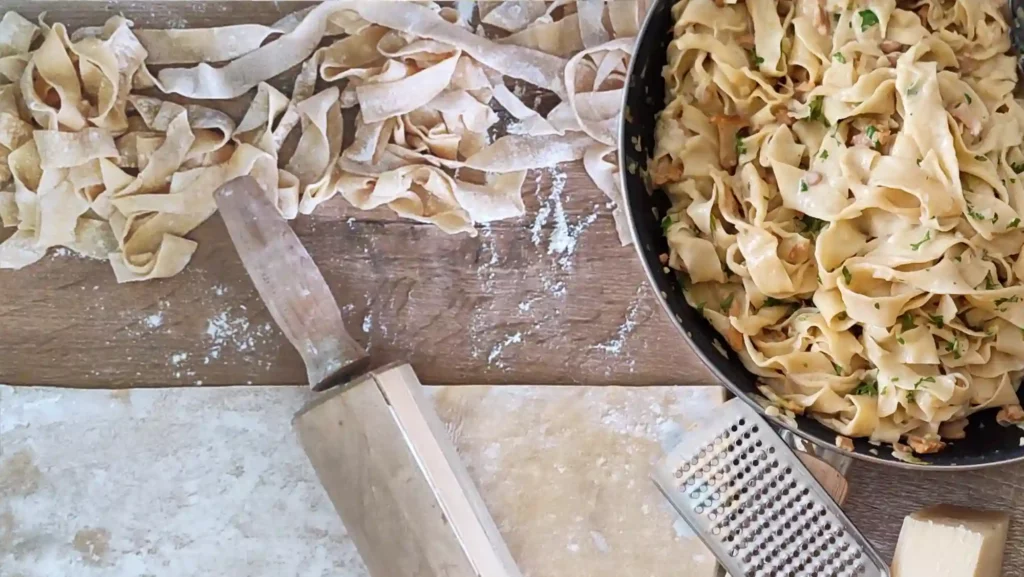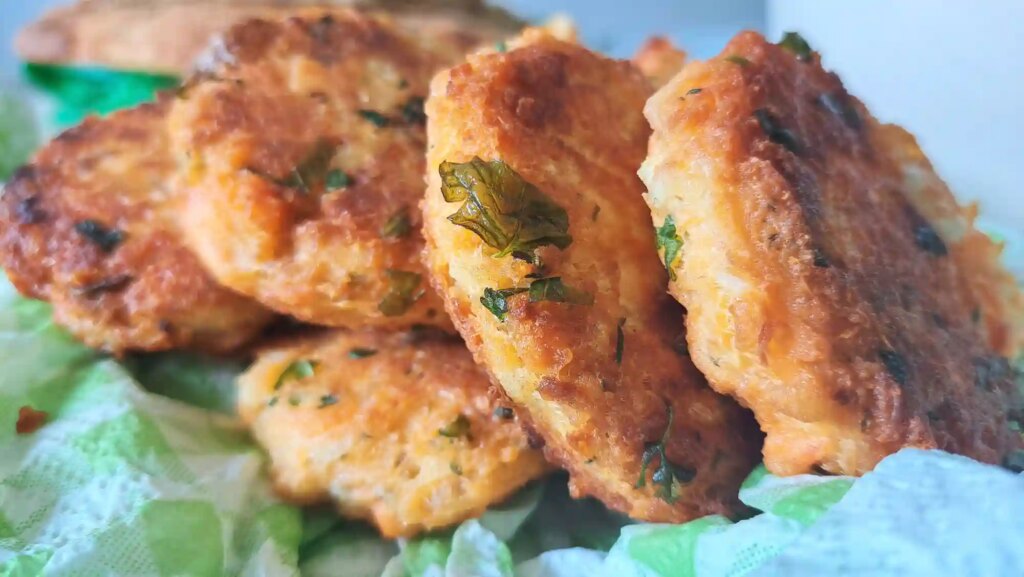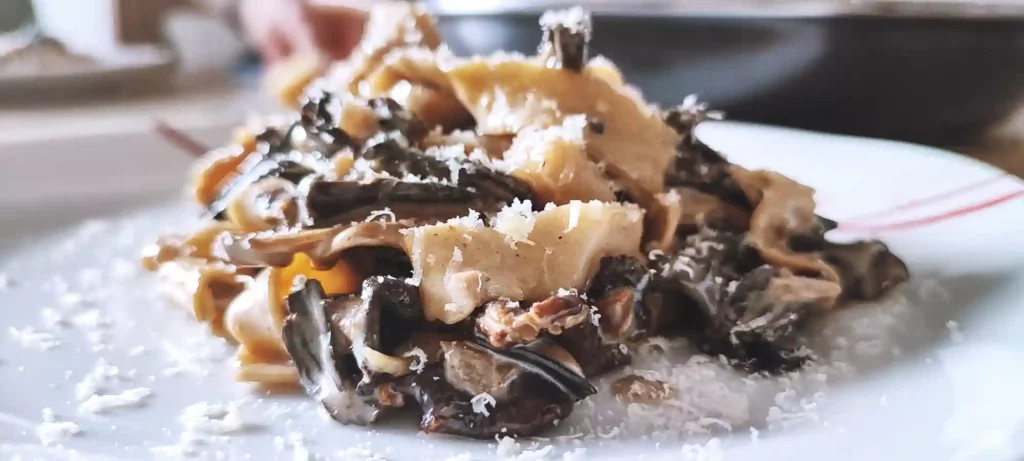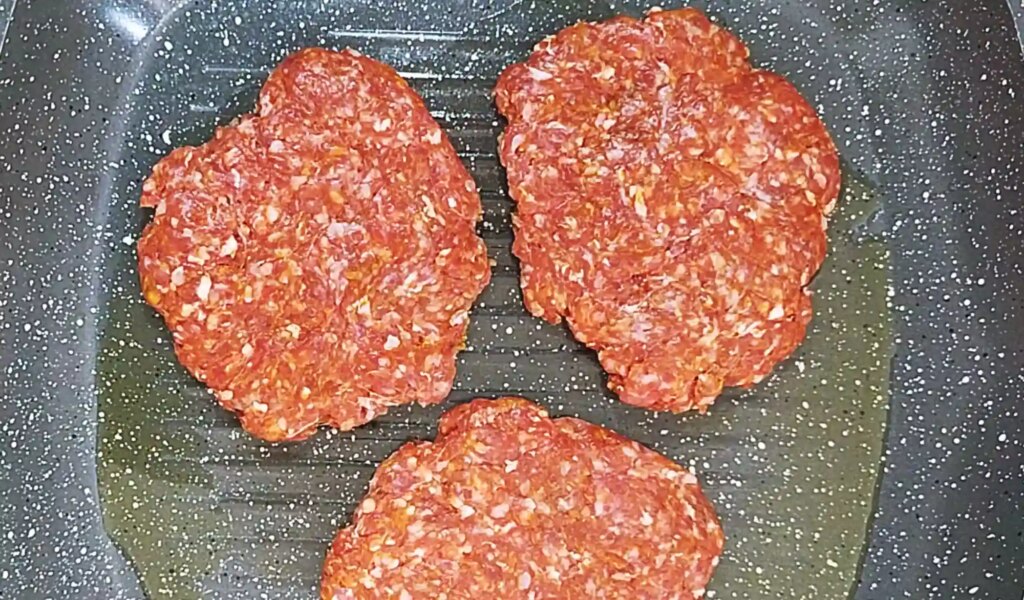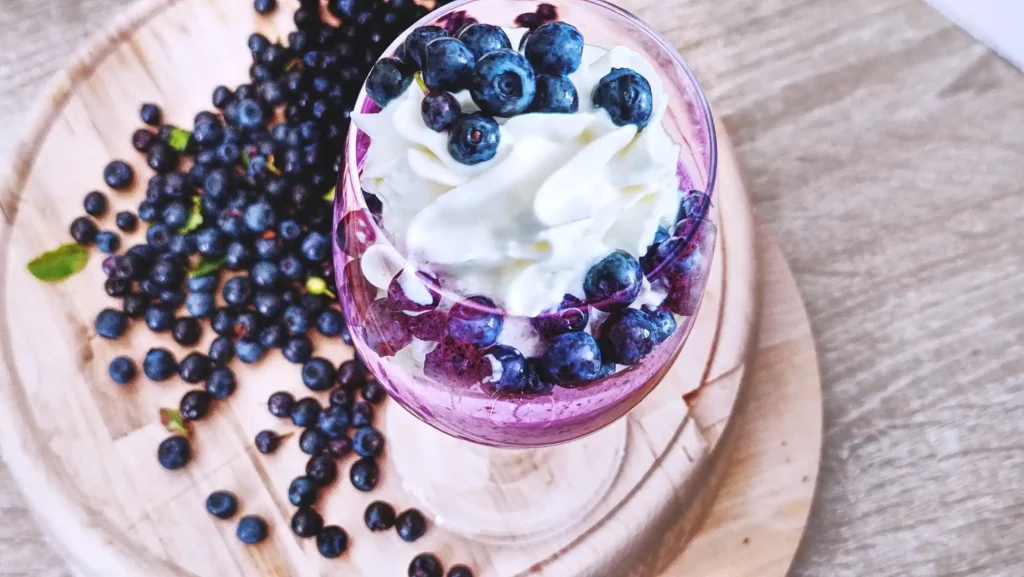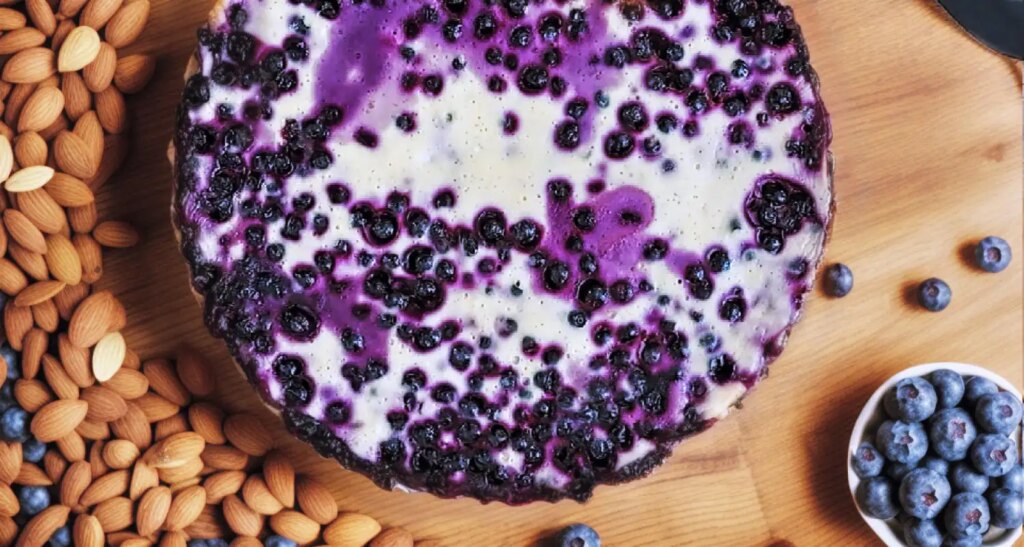This is a simple and easy recipe for homemade wild garlic and walnut pesto. It can be used as a topping for pizza, pasta or simply spread on bread! You only need a few ingredients, the main ones being: foraged wild garlic, walnuts and olive oil.
Walnut and wild garlic pesto can be used in the same way as any other pesto in a pasta, or on top of the pizza like with see fenell pizza pesto, spread on toast, or dip with crackers.
Table of Contents
Video:
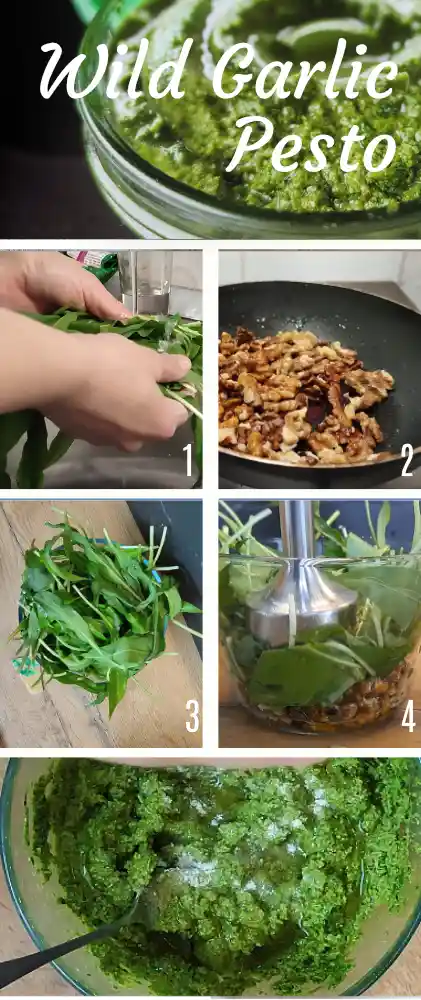
Walnut wild garlic pesto in 4 easy steps
This image shows the steps to make a delicious wild garlic pesto. Follow these simple instructions to create your own flavorful pesto.
- Wash the wild garlic leaves thoroughly under cold water and pat them dry with paper towels.
- Toast the walnuts in a dry skillet over medium heat for 3-4 minutes, stirring frequently until fragrant. Remove from heat and let them cool.
- In a food processor or blender, blend olive oil, the wild garlic leaves, toasted walnuts, Parmesan cheese, and one smaller garlic clove.
- Process until smooth, creating a vibrant green pesto.
- Adjust consistency with more olive oil and fine-tune taste with additional salt.
Wild garlic and walnut pesto recipe
This pesto is creamy, crunchy, and full of flavor. You can use it to dress pasta, spread on toast, or dip with crackers.
Wild Garlic and Walnut Pesto
This is a simple and easy recipe for homemade wild garlic and walnut pesto. It can be used as a topping for pizza, pasta or simply spread on bread! You only need a few ingredients, the main ones being: foraged wild garlic, walnuts and olive oil.
Ingredients
2 cups wild garlic leaves, washed and roughly chopped
1/2 cup walnuts, toasted
1/2 cup Parmesan cheese
1/2 cup extra virgin olive oil
1 smaller garlic clove
Salt to taste
Directions
- Wash the wild garlic leaves thoroughly under cold running water and pat dry with kitchen paper.
- Toast the walnuts in a dry frying pan over a medium heat for 3-4 minutes, stirring frequently, until fragrant. Remove from the heat and leave to cool.
- In a food processor or blender, combine the wild garlic leaves, toasted walnuts, grated Parmesan, peeled garlic cloves and olive oil.
- Pulse a few times to blend.
- With the food processor running, slowly drizzle in the extra virgin olive oil until the mixture reaches your desired consistency. You may need to scrape down the sides of the bowl occasionally with a spatula.
- Taste the pesto and season with salt to taste. Remember that Parmesan cheese adds a little saltiness, so adjust accordingly.
- If the pesto is too thick, add a little more olive oil or squeeze in 1/2 lemon juice. Also, if it’s too runny, you can add more walnuts or Parmesan cheese to thicken it.
- You can serve it straight away with pasta, spread on sandwiches, use as a dip or store for later use.
Recipe Video
Notes
- Store the wild garlic pesto in an airtight container in the refrigerator for up to 4-5 days. You can also freeze it in ice cube trays for longer storage. Once frozen, transfer the pesto cubes to a freezer bag and use as needed.
You can use wild garlic pesto wherever you would normally use garlic. For example, these honey garlic meatballs by Persnickety Plates, would go great with a spoonful of wild garlic pesto 🙂
Or in the recipe Crescent Roll Breakfast Casserole from Quiche My Grits, you can substitute garlic salt with my wild garlic pesto.
Storing homemade walnut and wild garlic pesto
How to tell if pesto has gone bad?
To keep your wild garlic pesto from going bad, store it properly.
Pesto that is sold refrigerated should always be kept in the refrigerator and used within 5 to 7 days. Homemade pesto should be refrigerated and used within 4 to 5 days.
You can also freeze your pesto to extend its shelf life. You can freeze it in a jar, ziplock bag, or ice cube tray. However, freezing can affect the texture and color of your pesto, so it may not look or taste as good as fresh pesto.
How do I know if pesto is bad?
Pesto is a sauce made from fresh ingredients. It can go bad over time, especially if you make it yourself or store it improperly. Here are some signs that your pesto has gone bad:

- Mold! If you see fuzzy (or slimy) growth on the surface or inside the jar of pesto, it is spoiled and should be thrown away immediately.
- Smell! If your pesto has a strong sour, or unpleasant odor, it is probably spoiled and should not be consumed.
- Color! If your pesto has changed color from green to brown, black, or yellow, it is oxidized and may have lost its flavor and freshness.
- Taste! If your pesto tastes bitter, harsh, or metallic, it is probably bad and should not be eaten.
Nutrition table for the wild garlic pesto with walnuts recipe
| Nutrient | Amount per Serving (1 tablespoon) |
|---|---|
| Calories | Approximately 86 calories |
| Total Fat | 9g |
| – Saturated Fat | 1.5g |
| Cholesterol | 1.7mg |
| Sodium | 53mg |
| Total Carbohydrates | 0.7g |
| – Dietary Fiber | 0.1g |
| – Sugars | 0.1g |
| Protein | 1.3g |
What to do with wild garlic and walnut pesto?
What to eat with wild garlic pesto? Pesto is versatile and can be used in many ways. Wild garlic and walnut pesto can elevate the taste of a wide range of dishes. Experiment and get creative! Here are just few examples with other pesto recipes:
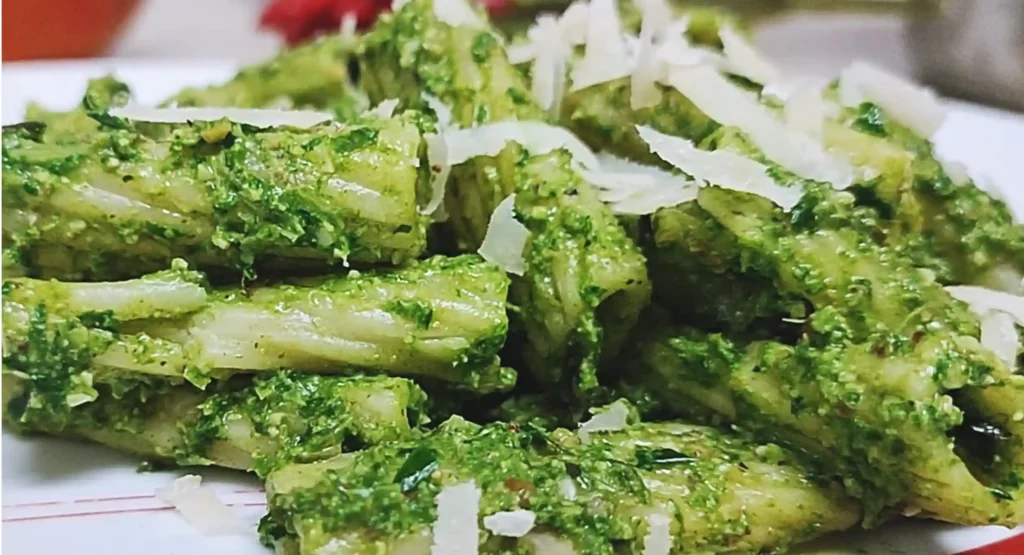
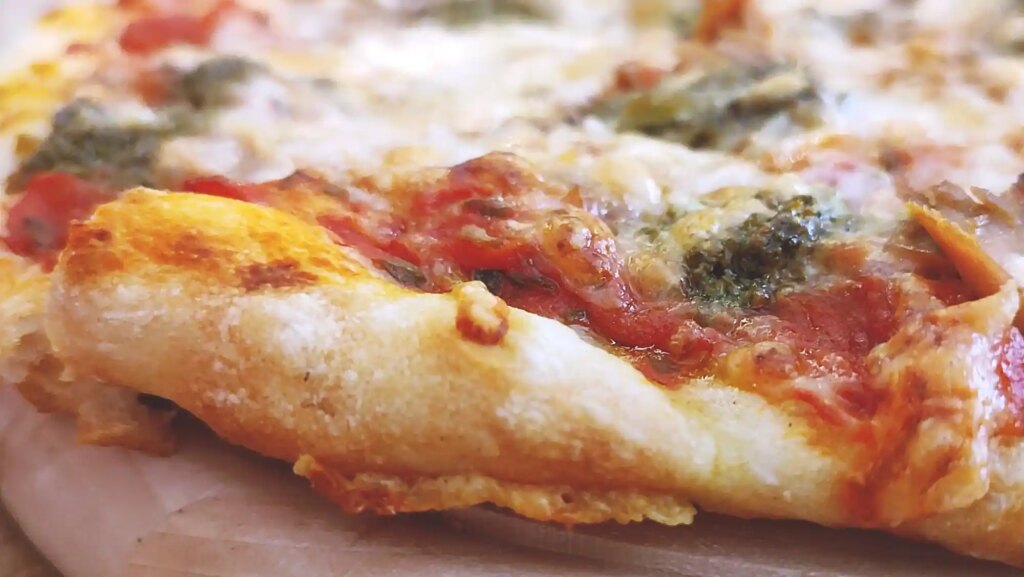
Popular Turbo Tasty Recipes

